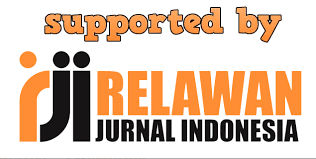Sikap Ibu Terhadap Sisa Obat Pengobatan Di Salah Satu Puskemas Di Kota Bandar Lampung
DOI:
https://doi.org/10.32382/medkes.v18i2.218Keywords:
drug storage, compounded drugs, leftover medicationsAbstract
The prevalence of leftover medicines that are still stored in households is still quite high, including people still storing medicines that have expired. Children are a vulnerable age group who often receive compounded and non-compounded medicines. The purpose of this study was to compare the attitudes of the two groups of mothers towards leftover compounded drugs and non-compunded drugs with assessment aspects namely storage of leftover drugs, reuse, and re-examination. This research is a quantitative-analytical research, non-experimental, with a cross-sectional design used in this study. Data was obtained from mothers of children who received treatment, carried out by guided interviews using an interview instrument containing 8 statements. The data was then processed statistically using the Chi Square test. The results showed that the age of most respondents was in the range of 26-35 years, the most recent education being high school, and as housewives, and using insurance. The percentage of respondents who showed a positive attitude on the aspects of remaining drug storage, reuse, re-examination in the compunded group (97.5%; 95%; 98.8%) showed a higher percentage than the non-compounded group (86.2%; 85% ; 97.5%). Both groups showed significant differences in aspects of leftover drug storage and reuse.
References
DAFTAR PUSTAKA
Alhamad, H., Patel, N., & Donyai, P. (2018). How do people conceptualise the reuse of medicines? An interview study. International Journal of Pharmacy Practice, 26(3), 232–241. https://doi.org/10.1111/ijpp.12391
Bekker, C., Van Den Bemt, B., Egberts, T. C. G., Bouvy, M., & Gardarsdottir, H. (2019). Willingness of patients to use unused medication returned to the pharmacy by another patient: A cross-sectional survey. BMJ Open, 9(5), 1–5. https://doi.org/10.1136/bmjopen-2018-024767
Cokro, F., Arrang, S. T., Solang, J. A. N., & Sekarsari, P. (2021). The Beyond-Use Date Perception of Drugs in North Jakarta, Indonesia. Indonesian Journal of Clinical Pharmacy, 10(3), 172–179. https://doi.org/10.15416/ijcp.2021.10.3.172
Dadgarmoghaddam, M., Imenshahidi, M., Aliabadi, A., Baseri, H., & Khajedaluee, M. (2016). Unused Medicines in Households. Razavi International Journal of Medicine, 4(1). https://doi.org/10.17795/rijm34351
Ehrhart, A. L., Granek, E. F., Nielsen-Pincus, M., & Horn, D. A. (2020). Leftover drug disposal: Customer behavior, pharmacist recommendations, and obstacles to drug take-back box implementation. Waste Management, 118, 416–425. https://doi.org/10.1016/j.wasman.2020.08.038
Febrianti, Y., Ardiningtyas, B., & Asadina, E. (2019). Kajian Administratif, Farmasetis, dan Klinis Resep Obat Batuk Anak di Apotek Kota Yogyakarta. Jurnal Pharmascience, 5(2). https://doi.org/10.20527/jps.v5i2.5798
Insani, W. N., Qonita, N. A., Jannah, S. S., Nuraliyah, N. M., Supadmi, W., Gatera, V. A., Alfian, S. D., & Abdulah, R. (2020). Improper disposal practice of unused and expired pharmaceutical products in Indonesian households. Heliyon, 6(7), 6–10. https://doi.org/10.1016/j.heliyon.2020.e04551
Isnenia, I. (2021). Profil Penyimpanan Obat Pada Desa Di Kabupaten Lampung Selatan (The Profile Of Drug Storage In A Village At Lampung Selatan District). Journal Of Current Pharmaceutical Sciences, 4(2), 373–378.
Kristina, S. A., Wiedyaningsih, C., Cahyadi, A., & Ridwan, B. A. (2018). A survey on medicine disposal practice among households in Yogyakarta. Asian Journal of Pharmaceutics, 12(3), S955–S958.
Kumar S, L., Logeshwaran L, L., Vanitha Rani, N., Thennarasu P, T., Keerthana M, K., & Lavanya M, L. (2019). Assessment of Knowledge and Awareness on the Disposal of Expired and Unused Medicines among Medication Consumers. Journal of Young Pharmacists, 11(4), 410–416. https://doi.org/10.5530/jyp.2019.11.84
Maharana, S., Paul, B., Dasgupta, A., & Garg, S. (2017). Storage, reuse, and disposal of unused medications: A cross-sectional study among rural households of Singur, West Bengal. International Journal of Medical Science and Public Health, 6(7), 1. https://doi.org/10.5455/ijmsph.2017.0408219042017
Makki, M., Hassali, M. A., Awaisu, A., & Hashmi, F. (2019). The Prevalence of Unused Medications in Homes. Pharmacy, 7(2), 61. https://doi.org/10.3390/pharmacy7020061
Persson, M., Sabelström, E., & Gunnarsson, B. (2009). Handling of unused prescription drugs - knowledge, behaviour and attitude among Swedish people. Environment International, 35(5), 771–774. https://doi.org/10.1016/j.envint.2008.10.002
Priyoherianto, A., Puspadina, V., & Chresna, M. P. (2023). Tingkat Pengetahuan Pasien Terhadap Beyond Use Date Obat Racikan di Apotek Kimia Farma 180 Pahlawan, Sidoarjo. Jurnal Farmasi Indonesia, IV(1).
Rahayu, A. P., & Rindarwati, A. Y. (2021). Pengelolaan Obat yang Tidak Terpakai Dalam Skala Rumah Tangga di Kota Bandung. Majalah Farmaseutik, 17(2), 238–244. https://doi.org/10.22146/farmaseutik.v17i2.64389
Rico, A. B., & Martinez, A. P. (2023). Medical Household Waste as a Potential Environmental Hazard : An Ecological and Epidemiological Approach. 1–18.
Sun, C., Hu, Y. J., Wang, X., Lu, J., Lin, L., & Zhou, X. (2019). Influence of leftover antibiotics on self-medication with antibiotics for children: A cross-sectional study from three Chinese provinces. BMJ Open, 9(12), 1–8. https://doi.org/10.1136/bmjopen-2019-033679
Syofyan, S., Indra, H., Suryati, S., & Almahdy, A. (2018). Pengetahuan dan Sikap tentang Obat pada Orangtua Siswa SD di Kota Padang. Jurnal Sains Farmasi & Klinis, 5(3), 212. https://doi.org/10.25077/jsfk.5.3.212-217.2018
Wang, L. S., Aziz, Z., & Chik, Z. (2021). Disposal practice and factors associated with unused medicines in Malaysia: a cross-sectional study. BMC Public Health, 21(1), 1–10. https://doi.org/10.1186/s12889-021-11676-x
Zaini, alifa nur, & Gozali, D. (2020). Pengaruh Suhu Terhadap Stabilitas Obat Sediaan Suspensi. Farmaka, 14(2), 1–15.
Downloads
Published
How to Cite
Issue
Section
PDF (Bahasa Indonesia) downloaded: 497















